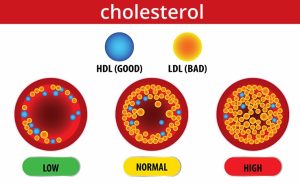Introduction: The Kidney–Heart Vicious Cycle
In addition to putting stress on your heart, high blood pressure, or hypertension, over time harms the kidneys’ fragile blood vessels. Fluid and waste retention then increases the strain on the cardiovascular system as kidney function deteriorates. Until significant harm has been done, this self-reinforcing loop is frequently overlooked. This article will discuss five early indicators that your kidneys may already be suffering from high blood pressure and how early diagnostic testing (along with specialized care) can end the cycle.
This article complements our core topic, The Silent Killers: Your Comprehensive Guide to Preventing, Reversing, and Managing Type 2 Diabetes and Hypertension Additionally, it functions as Supporting Article 1, which focuses on the relationship between hypertension and the kidneys.
Why Hypertension Harms the Kidneys (and Vice Versa)
Before diving into symptoms, it’s crucial to understand how hypertension and kidney damage feed into each other:
- Chronic high blood pressure injures the small arterioles in the kidneys, glomeruli, and tubulointerstitial tissue, causing hypertensive arteriolar nephrosclerosis.
- As kidney filtering capacity declines (lower glomerular filtration rate, GFR), the body retains more sodium and fluid, raising blood volume and further elevating blood pressure.
- This feedback loop accelerates both cardiovascular and renal disease progression.
- Because this interplay is often “silent” until late, relying only on symptoms is risky — which is why regular kidney function screening in hypertensive patients is standard practice.
In essence: uncontrolled hypertension can damage kidneys, and damaged kidneys worsen hypertension. Recognizing early signs is critical.
Five Warning Signs That High Blood Pressure Is Harming Your Kidneys
Here are 5 red-flag symptoms or lab changes to watch for. Any of these warrant prompt evaluation, especially in someone with known hypertension
Persistent swelling (edema) in ankles, feet, or face
Excess fluid and sodium build up in tissues when the kidneys are unable to filter effectively. Ankle, foot, and leg swelling, as well as puffy face or periorbital edema, may be observed. Swelling indicates deteriorating kidney function if it continues even after taking diuretics or following a low-salt diet.
One of the risks of the kidney-heart overlap is that swelling accompanied by elevated blood pressure may also be mistaken for heart failure.
Dark, foamy, or bloody urine (proteinuria / hematuria)
One of the clearest “warning lights” is abnormal urine:
- Foamy urine: suggests excess protein (albumin) leaking into urine (proteinuria);
- Dark or tea-colored urine / red streaks: may indicate blood (hematuria) or severe glomerular injury;
- Persistent proteinuria on dipstick or elevated urine albumin-to-creatinine ratio (uACR).
Even small amounts of albuminuria in a hypertensive patient are associated with higher cardiovascular and kidney risk.
Rising fatigue, nausea, or “not feeling well”
As kidney function declines, uremic toxins, fluid imbalances, and electrolyte disturbances build up. Patients can experience:
- Persistent fatigue, weakness
- Loss of appetite, nausea, vomiting
- Metallic taste in mouth, itching, trouble concentrating
- Mental fog, confusion
In older adults, these non-specific symptoms are often ignored until more severe disease.
Uncontrolled or rising blood pressure despite therapy
It may indicate deteriorating kidney function if your blood pressure was under control but is now steadily rising in spite of medication compliance and lifestyle changes. The kidneys are essential for controlling blood pressure; as they age, they lose their capacity to buffer variations in volume, salt, and hormones (such as renin-angiotensin).
A red flag is a rising serum creatinine or a falling estimated GFR that occurs concurrently with worsening blood pressure.
Electrolyte imbalances, changes in potassium, or muscle cramps
As kidney excretory function weakens, electrolyte disturbances become more common:
- Hyperkalemia (elevated potassium) may cause muscle cramps, weakness, or even arrhythmias
- Low sodium, variable calcium or phosphate levels
- Metabolic acidosis (patients may feel increasingly short of breath)
These lab disturbances often manifest subtly (e.g. muscle cramps, palpitations) before overt symptoms.
Why These Symptoms Matter: From Early Detection to Prevention
Why pay attention to these indicators? Because there are few options for reversing hypertension once it manifests in more severe symptoms (such as heart disease or severe kidney failure). Early identification enables:
- Adjustment of blood pressure therapies (especially ACE inhibitors / ARBs) to slow kidney damage
- Monitoring and treatment of electrolyte abnormalities
- Lifestyle and dietary changes (e.g. kidney-friendly diet, salt restriction)
- Referral to specialized Kidney Disease Management and Cardio-Pulmonary Care for co-management
In fact, detection of microalbuminuria or a small decline in GFR often changes prognosis—slowing progression to end-stage renal disease.
Recommended Diagnostic Tests (High-Intent Keywords)
Key Tests to Order / Monitor:
Test / Metric | Purpose / What it Detects | Relevance to Hypertension + Kidney Damage |
Basic markers of filtration and waste clearance | Elevated creatinine signals reduced GFR | |
Standard measure of kidney function | Tracks decline over time | |
Detects micro- or macroalbuminuria | Early indicator of glomerular damage | |
Quick screening for protein, blood, glucose | May reveal proteinuria or hematuria | |
Alternative GFR marker less influenced by muscle mass | Useful when creatinine is misleading | |
Monitors potassium, sodium, acid-base balance | Detects hyperkalemia or acidosis | |
Broad metabolic check (including kidney, liver, glucose) | Helps see overall systemic stress | |
Detects heart strain or subclinical damage | Useful in the overlapping heart–kidney disease scenario | |
Assess heart structure and function | To evaluate cardiac burden from hypertension | |
Assess kidney size, obstruction, structural changes | Rules out alternative causes of kidney injury |
How Wellgen Can Help: Kidney Disease Management + Cardio-Pulmonary Care
Once patients identify potential warning signs or receive abnormal test results, they’ll need specialized care. That’s where Wellgen’s services come in.
- Kidney Disease Management: Through personalized screening, monitoring, and therapeutic strategies, Wellgen helps slow or prevent progression of kidney disease.
- Cardio-Pulmonary Care: Because hypertension affects both cardiac and pulmonary systems, Wellgen’s cardio-pulmonary program offers heart disease prevention, cardiac rehabilitation, monitoring, and integrated care.
- Diagnostic Testing Services: Wellgen provides cardiac testing (ECG, echocardiogram, biomarker panels) and specialized lab testing (including kidney function tests).
Hypertension & Kidney Care (a subset service): This service specifically addresses the overlap between blood pressure management and kidney health.
Prevention Strategies to Break the Cycle
Prevention and early intervention are your best tools. Here are key strategies:
- Strict blood pressure control: Use of ACE inhibitors or ARBs (renal-protective) plus other agents as needed
- Low sodium / kidney-friendly diet: Limit salt, avoid processed foods
- Controlled blood sugar in diabetics (since diabetes often exacerbates kidney damage)
- Weight management, physical activity, avoidance of smoking
- Regular monitoring: baseline and follow-up tests (creatinine, uACR, eGFR, electrolytes)
- Medication review: avoid nephrotoxic drugs (NSAIDs, certain antibiotics)
- Manage dyslipidemia, reduce inflammation (hs-CRP, lipid profile)
- Patient education and adherence support
These are part of a holistic program within Wellgen’s chronic disease and renal care protocols.
Summary & Call to Action
There are other causes of high blood pressure besides heart problems. It subtly damages your kidneys, and once kidney damage starts, the additional strain on blood pressure can hasten the onset of heart disease. The vicious cycle between the kidneys and the heart does exist, but it need not continue unchecked.
Act immediately if you experience any of these warning signs: persistent swelling, blood-tinged or foamy urine, unexplained fatigue, worsening blood pressure despite treatment, or abnormalities in the lab, such as rising potassium or creatinine. Your course can be significantly altered by early diagnostic testing and intervention.
Take the next step:
- Request a full kidney function panel / CMP / uACR via Wellgen’s Diagnostic Testing Services
- If abnormalities are present, enroll in our Kidney Disease Management program
- Simultaneously, have your cardio-pulmonary function assessed through Wellgen’s Cardio-Pulmonary Care services
As outlined in our pillar content on managing diabetes and hypertension, these services work together to protect your heart, maintain kidney function, and break the vicious cycle.
References
[1] Zhang, Z. (2025b, August 5). Hypertensive arteriolar nephrosclerosis. Merck Manual Consumer Version. https://www.merckmanuals.com/home/kidney-and-urinary-tract-disorders/blood-vessel-disorders-of-the-kidneys/hypertensive-arteriolar-nephrosclerosis?utm_
[2] 9 Lab tests for tracking kidney health in hypertensive patients. (2025, January 22). Rupa Health. https://www.rupahealth.com/post/9-lab-tests-for-tracking-kidney-health-in-hypertensive-patients?utm_



